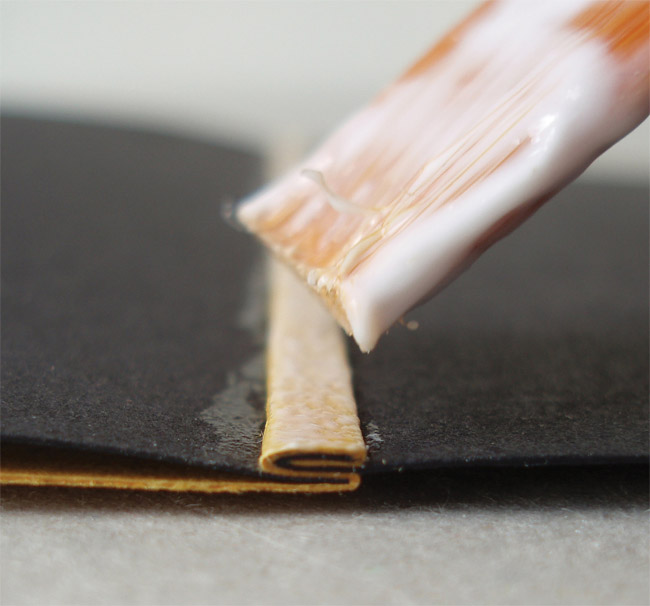I love this structure developed by Ben Elbel, which he appropriately named Onion Skin Binding. A lovely description inspired by layering effect that creates the mesmerizing maze-like spine. In this post I talk about this structure with Ben starting with its development to how he’s adapted the structure.
The Onion Skin is another one of your innovative structures. Did you develop the structure around an existing project or was it simply a product of play and experimentation?
Absolutely a product of play back in my student years when I had a lot of time on my hands. :)
It was born from playing around with the idea of guards/stubs in photo albums. I introduced colour, and tried to use uninterrupted pieces of paper and suddenly the pattern was born. Readability is a key element of my personal work. I like to be able to follow a line, understand how something is built and be able to take it appart mentally. This is also the idea behind my ‘dos rapporté’ binding.
The Onion Skin binding is another structure that you offer as an online workshop and is also how I learned the technique. I found it to be surprisingly simple once I understood the pattern of the layering. Is this a challenging structure to teach (particularly online)?
Exactly as you say. Once you have understood the sequence it is very simple to make, and consequently very simple to teach too.
If you don’t have the opportunity to take Ben’s online course, you can simply purchase his comprehensive tutorial here.
You’ve really played around with this structure; can you talk about how you’ve adapted the binding?
I have adapted the principle for a single section binding- the signature is sewn on a single stub made from different layers of paper, which are then folded and glued around the initial connection, until it is thick enough to form shoulders to accommodate boards, exactly as in a traditional binding.



